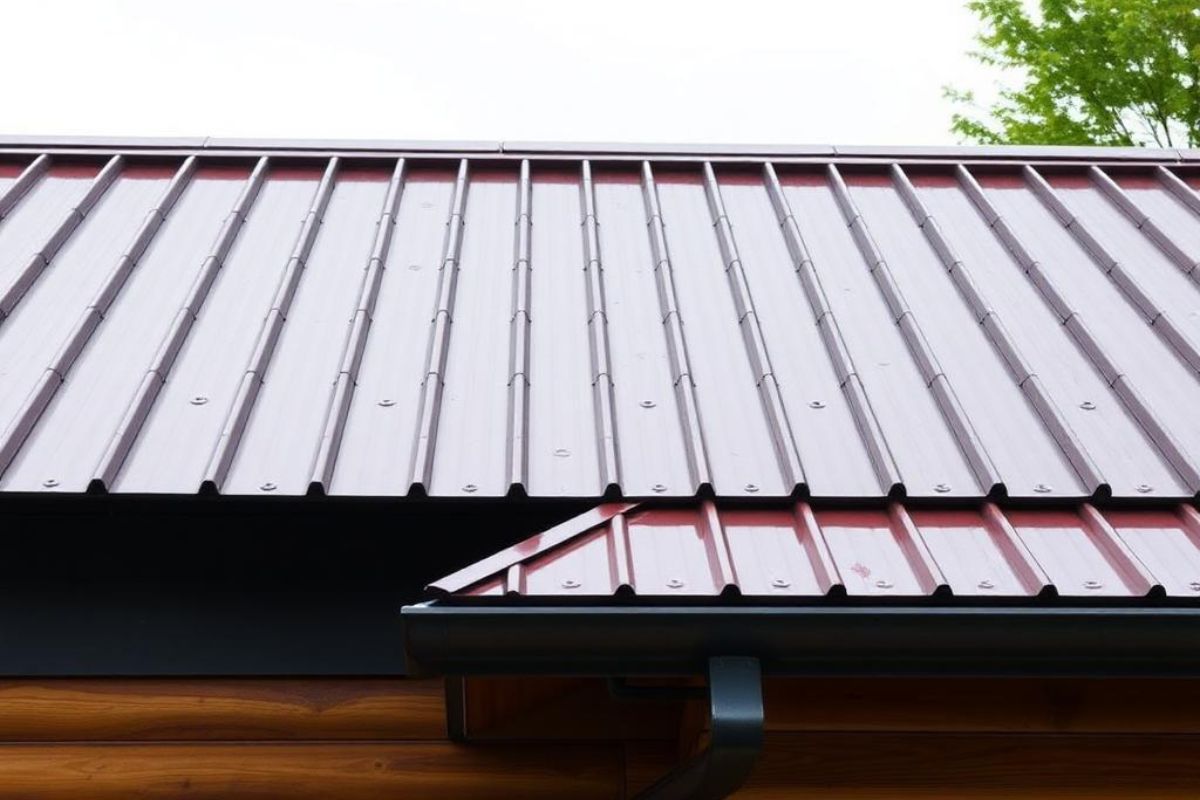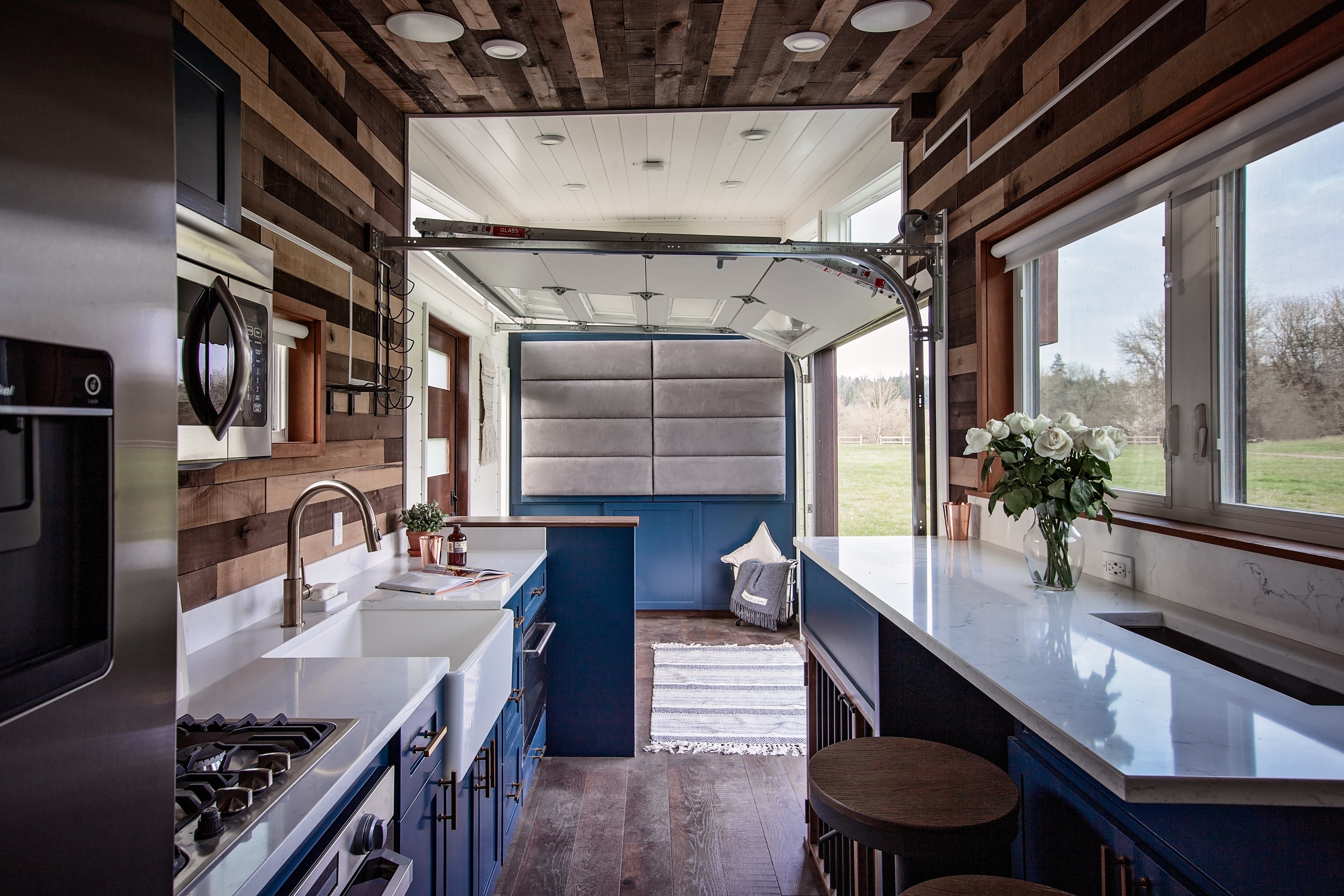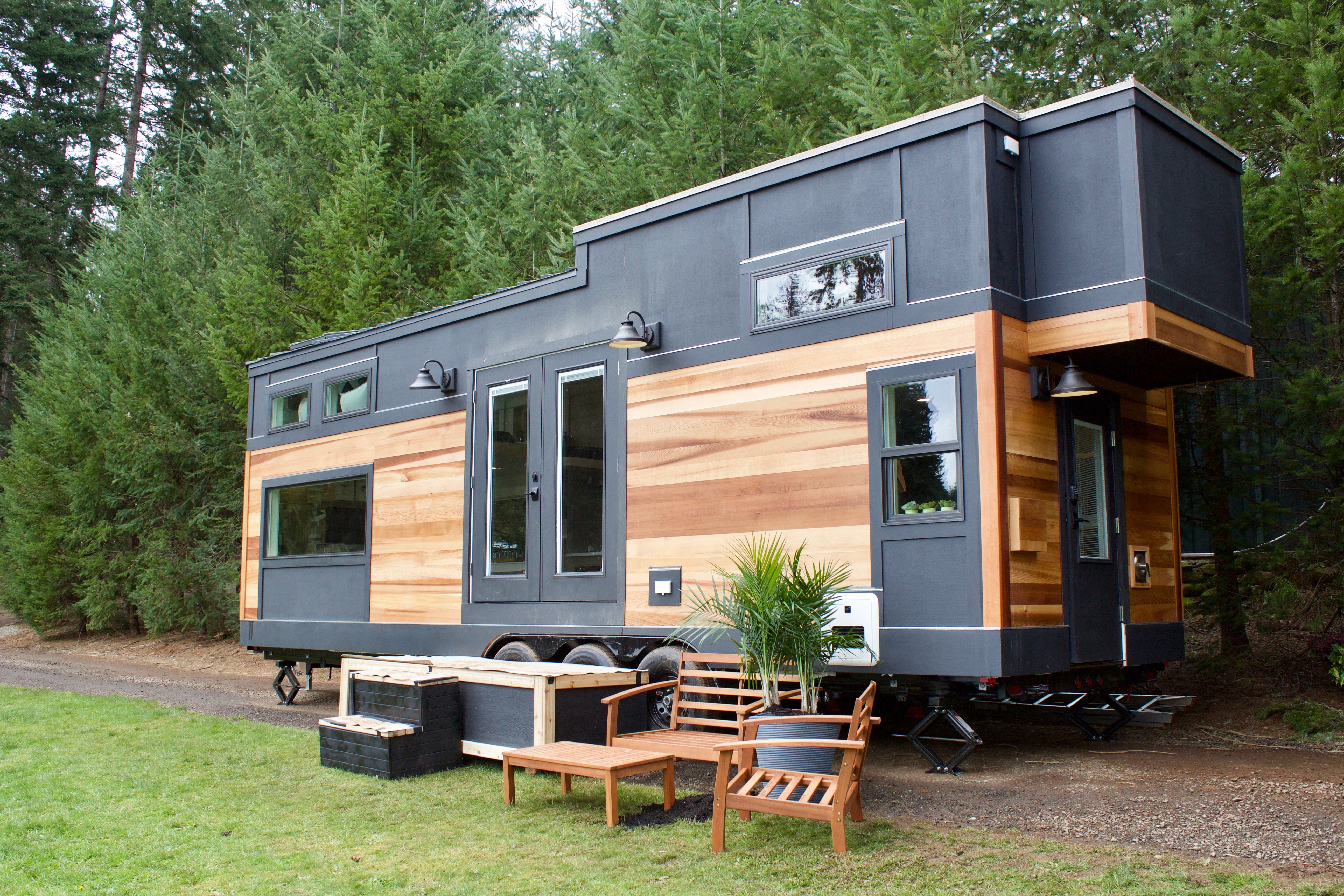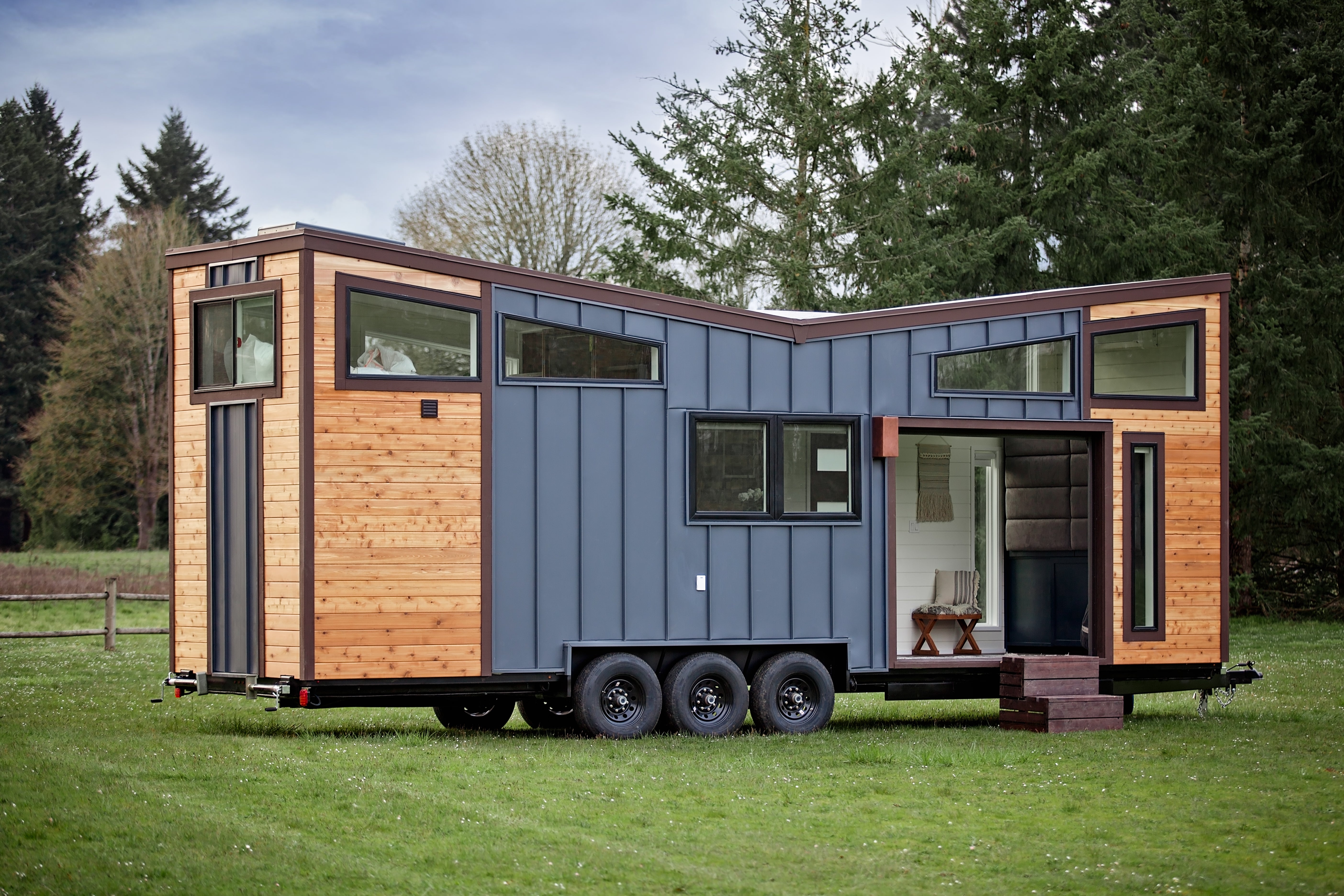Roof leaks during heavy rain can be a frustrating and costly problem for homeowners. If you’ve noticed that your roof only leaks in heavy rain, it’s crucial to understand what might be causing the issue and how to address it.
Leaks in the roof during storms can lead to water damage, mold growth, and even structural issues if not dealt with quickly.
This article will explore the common causes of tiny house roof leaks during heavy rain, how to fix them, and what you can expect in terms of repair costs.
Why Do Roof Leaks Only Happen in Heavy Rain?
If your roof only leaks during heavy rain, you might be dealing with a specific set of issues that only reveal themselves when the conditions are right.

Here are some common reasons why your roof might leak during heavy rainfall:
1. Clogged Gutters
Gutters play a significant role in channeling water away from your roof and home. When gutters are clogged with debris, leaves, or dirt, they can’t effectively carry rainwater away. This can lead to water overflowing and backing up onto the roof, causing leaks, particularly during a heavy rainstorm. Clogged gutters can lead to water pooling in certain areas of the roof, creating the perfect environment for leaks.
Solution: Clean your gutters regularly, especially during the fall and spring when leaves and debris are more likely to clog them. If you’re not comfortable doing it yourself, hiring roofing contractors in your local area can help with regular gutter maintenance.
2. Damaged Shingles
Over time, shingles on your roof can degrade, crack, or become loose due to the wear and tear caused by storms, sun exposure, or just age. If you notice your roof only leaks during heavy rain, it could be because the shingles have worn down and no longer provide the watertight seal they once did. Even small cracks or damaged shingles can allow water to seep into the roof, causing leaks.
Solution: If you find that damaged shingles are the cause, they will need to be replaced. If you’re dealing with just a few damaged shingles, this can be a relatively simple fix. However, if your roof is older and the shingles are widespread, you may need to consider a larger repair or even a full roof replacement.
3. Improperly Sealed Skylights or Chimneys
Skylights and chimneys are common entry points for water if they’re not properly sealed. The flashing around these areas is crucial in keeping water out, but over time, the seals can wear down, or the flashing can become cracked or loose. During a heavy rainstorm, water can easily seep through these vulnerable points, causing leaks inside the home.
Solution: To fix leaks around skylights or chimneys, the flashing or sealant needs to be repaired or replaced. In some cases, the entire skylight may need to be resealed or replaced if it’s reached the end of its life. A roofing contractor can inspect these areas and provide an estimate for repairs.
4. Worn-out Roof Flashing
Roof flashing is the metal that’s installed around features like chimneys, vents, and skylights to direct water away from vulnerable areas. If the flashing becomes worn, cracked, or rusted, it can create gaps through which water can enter the roof. Flashing damage is often hard to spot from the ground, but it can lead to significant leaks during heavy rain.
Solution: If you suspect your flashing is the problem, a professional roofing contractor can inspect and replace the damaged flashing. Flashing repairs can be relatively simple, but if your roof has extensive flashing damage, it could require a more comprehensive repair.
5. Improper Roof Installation
If your roof was not installed properly to begin with, it might be more susceptible to leaks in heavy rain. Inadequate flashing, incorrect shingle placement, or poor-quality materials could all contribute to water entering your home. Roof leaks that only happen during heavy rain could be a sign of these underlying installation problems.
Solution: If your roof was recently installed and you’re already experiencing leaks, it’s crucial to contact the contractor who installed to inspect the work. In some cases, the installation may need to be corrected to prevent future leaks. For homes with older roofs, a full roof replacement might be necessary if the installation was done incorrectly.

How to Fix Roof Leaks During Heavy Rain
If you’ve identified the cause of your roof leak, it’s time to take action. Here’s how to fix the issues causing your roof to leak during heavy rain:
1. Inspect the Roof
The first step in fixing a roof leak is inspecting the roof to locate the source of the problem. If you feel comfortable doing so, you can carefully inspect your roof for damaged shingles, flashing, or other issues. However, it’s always recommended to hire a professional roofing contractor for a thorough inspection. A professional will be able to spot problems that may not be immediately obvious.
2. Repair or Replace Damaged Shingles
If damaged shingles are the cause of the leak, replacing them is often a straightforward solution. Shingles are relatively easy to replace, and you can either do it yourself or hire a contractor. If your roof has significant damage, replacing the entire roof may be the most cost-effective solution in the long run.
3. Seal Gaps Around Skylights and Chimneys
If the leak is coming from a skylight or chimney, sealing the gaps around these features is essential. You can apply new flashing or use a high-quality roofing sealant to ensure a watertight seal. In some cases, you may need to replace the entire skylight or chimney cap if it’s too damaged.
4. Clear Gutters and Downspouts
Ensure your gutters and downspouts are free of debris and properly functioning. Clean them regularly to prevent water buildup on your roof. If you’re not comfortable cleaning your gutters, hiring a roofing contractor to clean them for you can save you time and ensure they’re properly maintained.
5. Consider Roof Replacement
If your roof is old, severely damaged, or improperly installed, it might be time for a full roof replacement. Replacing an old or damaged roof can prevent future leaks and improve the overall efficiency of your home.
Roof Leak Repair Costs
The cost of repairing roof leaks in heavy rain depends on the severity of the damage and the type of repair required. Here’s a general breakdown of repair costs:
-
Replacing Damaged Shingles: Costs can range from $200 to $700, depending on the number of shingles that need to be replaced.
-
Skylight or Chimney Sealing: Repairing or resealing a skylight or chimney typically costs between $500 and $750.
-
Cleaning Gutters: Gutter cleaning usually costs between $200 and $400.
-
Replacing Flashing: Flashing repairs can range from $300 to $1,000, depending on the extent of the damage.
-
Full Roof Replacement: A full roof replacement can cost anywhere from $5,000 to $15,000 or more, depending on the size of the roof, materials used, and the complexity of the installation.
Conclusion
Roof leaks during heavy rain can be caused by a variety of issues, from clogged gutters and damaged shingles to improperly sealed skylights and flashing.
Identifying the cause of the leak and addressing it as soon as possible is crucial to preventing further damage to your home.
If you live in Pennsylvania, or nearby areas, where it can rain a lot, it's highly recommended to reach out to professional local roofing contractors in Altoona, PA, to inspect your roof and provide the necessary repairs.
By taking action early, you can save money in the long run and keep your home safe and dry during those heavy rainstorms.






Share: